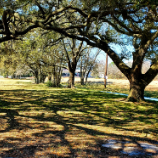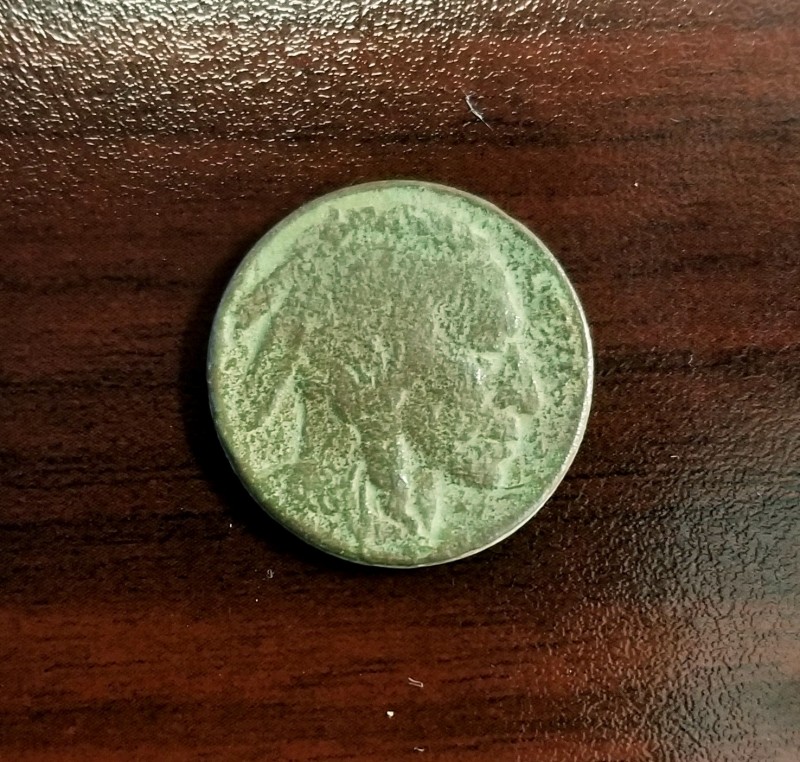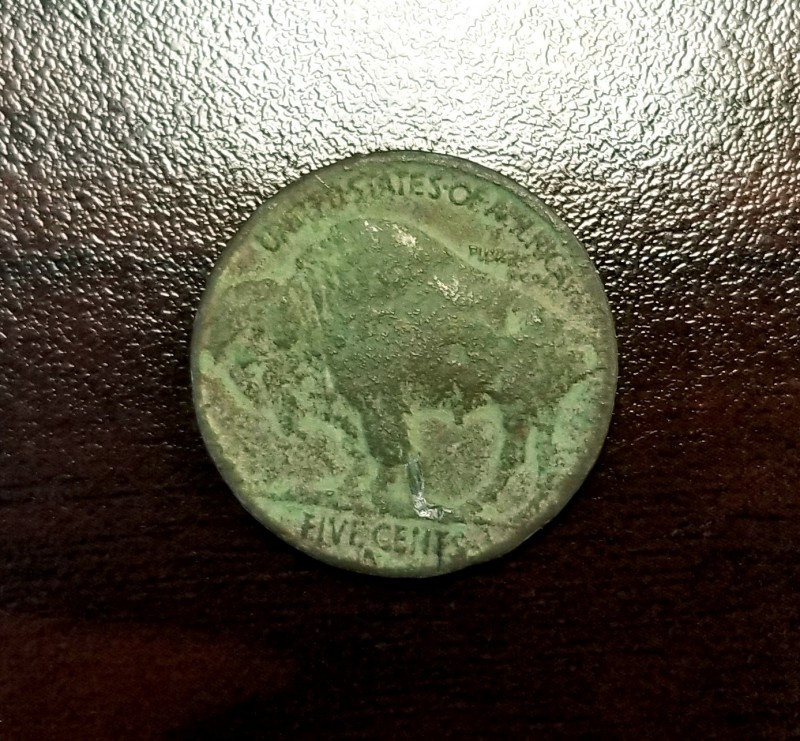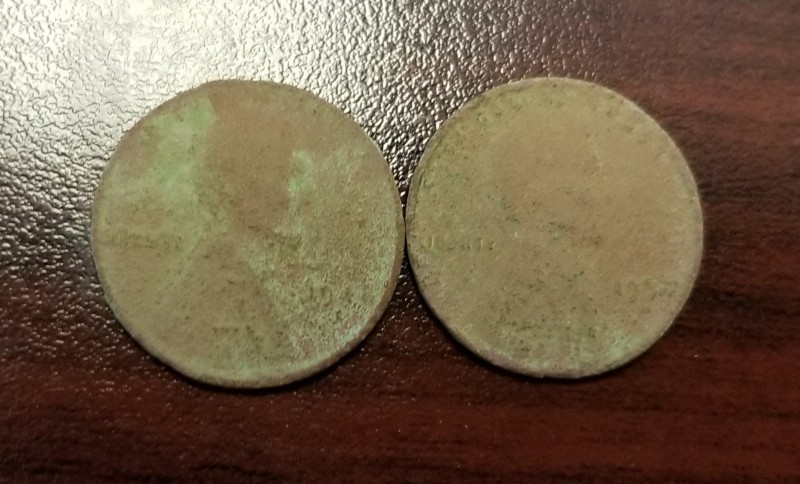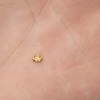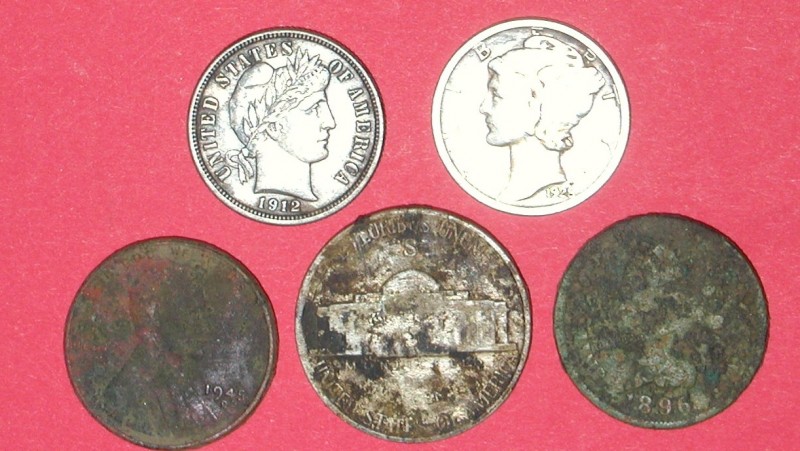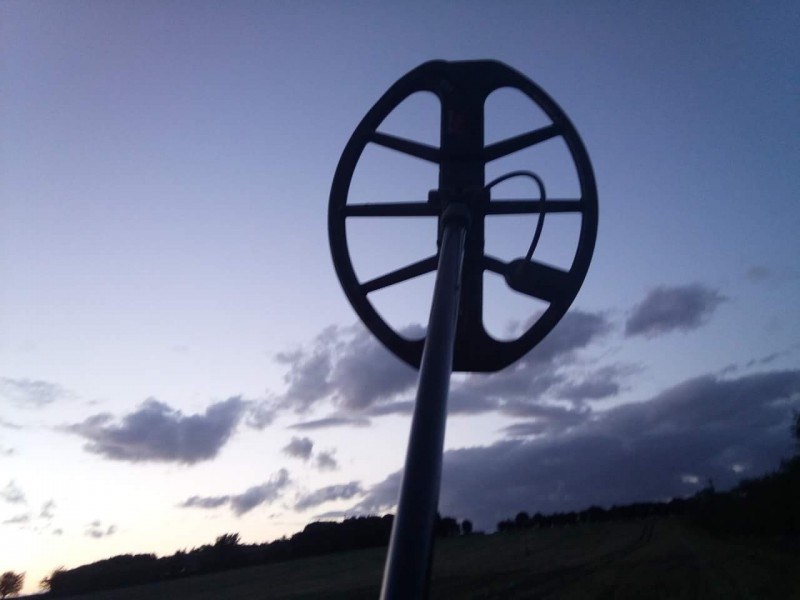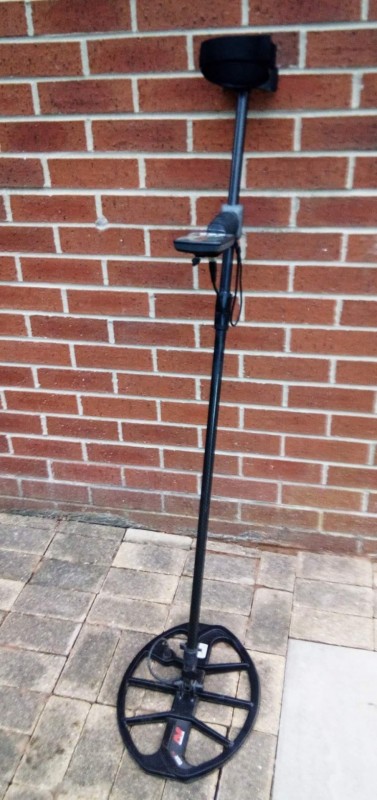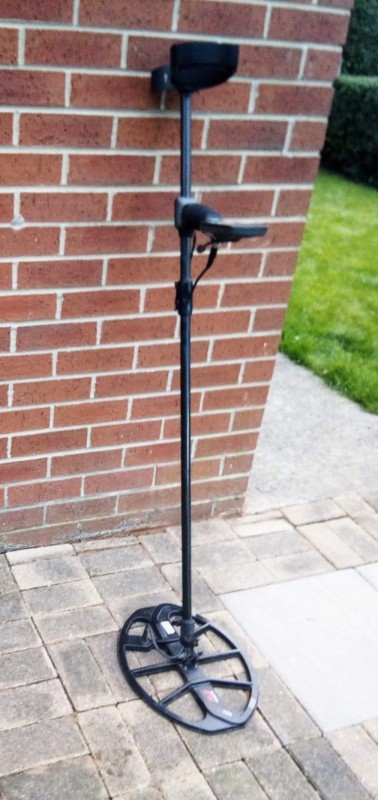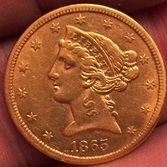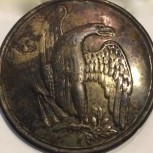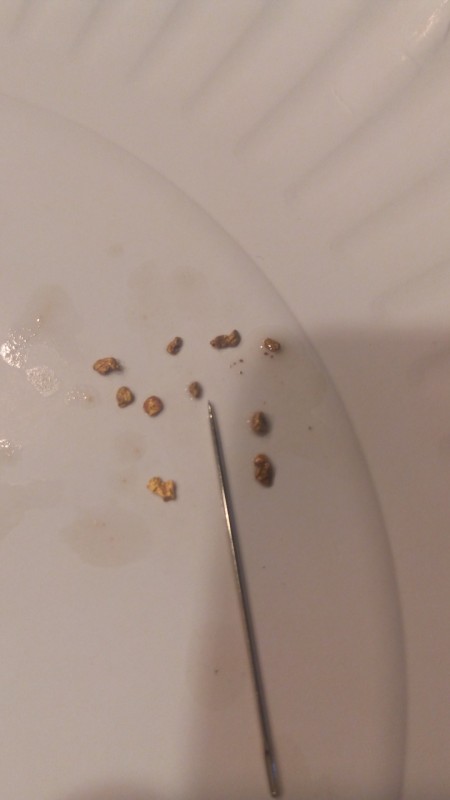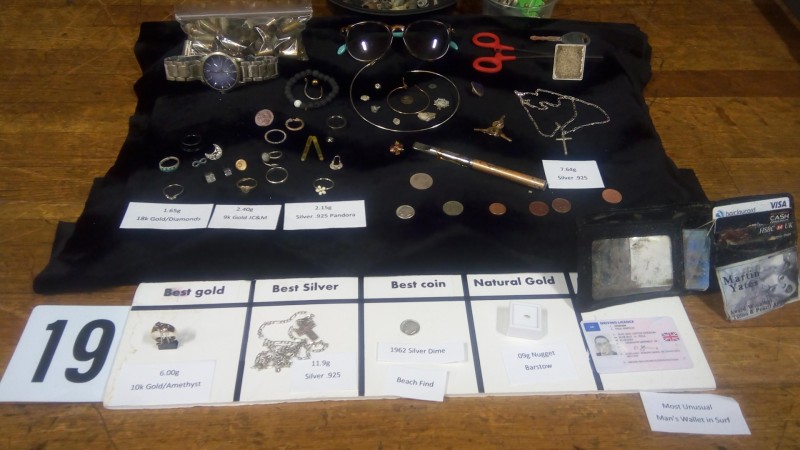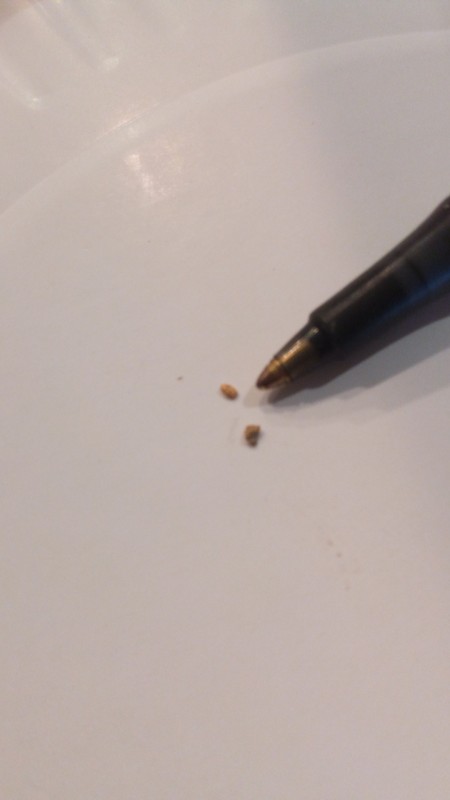Search the Community
Showing results for tags 'minelab equinox'.
-
Nox plus the sniper...so far
-
Apparently there has been a fairly large range of lower rod sizes, at the moment I’m working on carbon shafts for the Equinox and have found some larger lower rods won’t fit! So my question to all of you is what is the OD of your lower rod? I used calipers on mine and it’s 19.5mm I very much appreciate your time in this ? thanks Ed
-
As I mentioned in the below thread, I received my 6 inch coil yesterday and couldn't wait to take it through the paces: Today, during a lunch break from work, I headed out to a local old and pounded park I have hunted countless hours with countless machines. I have been amazed the life my Equinox brought back into this park. My early year success is outlined here: So, with an hour to hunt, my E600 in hand, loaded with the 6 inch coil and original firmware (I am still testing old vs. new firmware using my E600 with original and E800 with new firmware), I set out. I was running Park 1, 50 tone, Sensitivity 22 (pretty stable), Recovery 3 (6 on 800) and IB 1 (2 on 800) and walked into the area of the park I have hunted hardest to see if this rig could uncover anything I missed with all my other machines, including the E600 and E800 using stock coils. My first target was a series of bouncy tones across about 4" of ground. As I narrowed my swings, concentrating on the different tones, I was able to hear one solid mid tone that was 11-12 ID, but a couple of high tones that were more scratchy and not repeatable an inch or two away in two directions. I pinpointed and it was evident that I had 2, maybe 3 targets there. I chose to circle the mid-tone first. While the depth meter on the 600 with old firmware isn't exact, the modulation on the pinpoint told me it was in the 4"-5" range. So I dug. I was expecting a pull tab, or beaver tail. Both notorious for bouncing into the 12-13 range in my ground, but also occasionally giving off 11's and 14's. My intent was to clear the trash, so I could better hone in on the higher tones sitting near this target. A little over 4" down: I think it is a 1935... our ground is hard on nickels. Only my 3rd Buffalo since I started detecting and my previous two were no-dates. I refilled my hole, stood up and swept the coil over the area again... the high tones were still there, and equally as iffy as before, giving me numbers in the 21 to 26 range, and on every other pass or so. But they pinpointed pretty tight.. I estimated 5"-6" based on the pinpoint tone on both. A little ground excavating later and out popped: Looks like a 40's and a 50's wheatie. I have a little cleaning to do on all three of these coins, and they aren't ground breaking by numismatic standards, but I am thrilled. And here is why: Three old coins that by all rights, should have been found previously, but weren't. I have a suspicion that the closeness of these coins would have given larger coils, even with fast recovery like the Equinox, troubles. So the 6 inch coil came through in my opinion (I would bet that I was getting some type of blended tone previously... like a 15 or 16 on the Equinox as an example, which I chose not to dig thinking it was trash). In my soil, with the settings I was using, I think I was at the limit of detecting depth with these Wheaties... about 6". So that is really good information for me. Not that depth is everything, because I was able to separate between these three targets at depth. Had I been thinking more scientifically, I would have tried to clean up the tones by dropping the recovery down to 2 (4 on the 800), or boosting the sensitivity up to 24 or 25. Or I would have walked back to my car and grabbed the 800 with the stock 11" and documented what these targets read, and why I hadn't investigated them before. Heat of the hunt and a lesche in my hand got the better of me. All three of these targets were dead center in my plug. Which is somewhat expected when the coil itself is only 6", but just verification that the coil with this rig was pinpointing accurately. Hopefully more results and finds to follow. HEH (Happy Equinox Hunting) to all, ~Tim.
-
Hey friends. I remember seeing a post somewhere awhile back about changing the tones on the Nox to sound more like the Etrac or CTX 3030. Anyone know anything about this?
-
Use 5 tone. Set nails at -1 to -3 with lowest volume and low tone. For iron relics set -4 & down and set to a louder volume and low tone and for non-ferrous set 0 to 40 a loud volume and high tone. Basically a 2 tone low for iron relic & high for non-ferrous. and a quiet tone for small iron. A 3 tone mode. With this setting you will hear iron relics hitting a low louder tone and you can dig or not. High tone is your non-ferrous. This is good setting if you want to dig iron relics like I do. Some areas you don't want to dig iron relics you change to 2 tone or what ever you want. I think it's an interesting setting. The adjustments are great and easy in this detector. Now all we need now is a 5x10 or 8" round coil. Rick
-
After a fairly lean summer (90 hours hunting from early June to late September), surprisingly that included five permissions, things have picked up over the last three weeks. Here are the details: Hunt 1 in Schoolyard: 4 1/2 hour hunt on my favorite (one of only two) schoolyard, running Park 1, ground balanced, custom 5 tones, Iron Bias 3, recovery speed 6, I got a clean 25-27 signal at moderate tone depth (turned out to be 4 inches) and was very surprised to see a 1912 (common issue) Barber dime. 'Surprised' because 1) this schoolyard was a pasture prior to 1955, 2) (when I got it home and cleaned) the condition graded out AU-53 meaning this coin had seen very little wear/circulation in its lifetime, and 3) I thought I had been over this area previously (obviously not). Does this make sense? It certainly is possible that a coin minted 40+ years previously and in near mint condition could get dropped. For example, a previous recent hunt produced a fresh drop (surface) 1980 near mint Lincoln. Now having searched this schoolyard for nearly 100 hours I've theorized backfill was brought in 26 years ago when the original school was replaced with a modern one. So this is my best theory -- I'm occasionally finding coins that were relocated to this site from a considerably earlier drop zone. No matter, gotta love that silver and the outstanding condition is a bonus. Hunt 2 (3.5 hours) in city park established 1948 (previously industrial site first occupied in the 1890's): This is my EMI noisiest site, one I've had a lot of trouble with in the past with multiple detectors but particularly the Eqx 800 in multifrequency. Besides buried power lines along the street there is a hospital with helipad across the street. As I neared the street I encountered serious EMI and checking the individual frequencies saw that the problem was at 40 kHz. In my experience this is the exception -- most of the time (from underground powerlines, I think) it's 5 kHz that suffers worst. So..., since I'm looking for coins I chose to run at 5 kHz with gain of 19 (custom 5 tones, iron bias of 0, ground balanced, recovery speed 6). Hunting in a spot I had never previously searched (thinking it was modern fill) I got a strong copper-penny / dime type signal, thinking likely a copper Memorial or clad dime. Nope, only about 2 inches down: silver!! After cleaning it in water at home it showed a 1928 plain (common) date with the reverse in no better than VG condition, but a reasonably attractive, strong obverse. Always thrilled to find silver and this time no exception. Note: the ID's I was seeing at 5 kHz were consistent with multi-frequency ID's. This is reassuring, that when forced to hunt in single frequency the detector acts as expected. Hunt 3 (3.5 hours) in same city park: While out on hunt 2 I recalled that my new, long-awaited 6 inch coil was to be delivered that afternoon while I was actually on the hunt. Sure enough, there it was in the mailbox when I arrived home. Next day was my chance to try it out. I chose a part of the park I had hunted many times in the past with great success, both with the F75 originally and later with the Eqx 800. This area had previously accomodated a 1920's home, so quite a bit of iron (nails). Park 1, gain of 20, custom 5 tones, iron bias at 2, recovery speed 6. Searching a spot I know I've been over at least once with the F75 and probably twice with the Eqx 11" coil I got a decent (but with neighboring iron hits) nickel zone signal. Expecting junk (pulltab, canslaw, pencil ferrule, crown cap to name just some of the imposters) out popped a Jefferson 'nickel'. It seemed to have the typical dark toning characteristic of this kind of coin after being in the ground for a few years, but it wasn't orange color which tend to represent the worst examples of alkali corrosion. Still, didn't think it was anything special. Turns out it was my 3rd Warnick (this one 1943-S) of the summer! Next I searched an area which (based upon the density of trash) I had previously concluded was the house's trash dump. Running a small coil gives me confidence in such an environment and under a bush I got a very strong penny/dime signal which turned out to be a near-surface Wheat penny (1945-D)! 40+ years lying there waiting for my new 6 inch coil. My last old find I'm still unsure of depth/location since I didn't remember much about its recovery. When in old sites I dig anything above 17, even though that means pulling up the hated Stinkin' Zincolns, since Indian Heads and long buried Wheaties can give signals in this low. I do remember excavating a copper penny which showed no detail at all based upon the amount of dirt/crud it had accumlated over decades in the ground, but at the time I didn't expect anything more than a 1940's Wheatie at best. Thus I was quite surprised after getting home and soaking it that the reverse wreath of an Indian Head (1896 so over 120 years old) -- my second IH of the year. Summary/Conclusion: Although the Eqx has been an excellent producer for me in 183 hours of hunting, I'm pretty sure any decent detector would have found the two silver dimes. Neither was particularly masked nor deep. However, given that I was covering previously well-searched ground on Hunt 3 it sure seems likely that the combination of the 6 inch coil and the unmasking ability of the Eqx 800 pulled those 3 oldies out where other searches have failed. To add an extra note to those latter finds, over those 3 1/2 hours I only found two other coins -- a clad dime and a Zincoln. 60% of the coins I found that hunt were oldies. As can be seen in the photo, the dimes are characteristically (for my soil) as nice as the day they were dropped, but the two pennies and even the Warnick suffer from staining and (in the case of the pennies) scaling. I hope to be able to clean those up in the future. P.S. all of the hunts were 'all metal' (no discrimination or notching).
-
Hi all! FINALLY, after a long wait, I have a 6" coil on the way. I'm really looking forward to trying this coil in some really trashy spots I have in mind. A question for anyone that has the coil -- have you done any depth comparisons with it and the 11"? I'm curious as to how much depth would be lost, given equal settings, on a coin-sized target? Thanks! Steve
-
I just watched a Youtube video on the equinox masterclass by Derek Mclennan . He said something that is really quite true! He said that he feels like the equinox "forces" one to dig targets that other machines would have you not. This is effect increases your finds rate. I've been at this a long time (1990) but it's you guys from the late 70's and 80's that must remember those early machines that made you dig more targets right? HH sillllvar
-
When you save a program to User, Will the program mode you're in go back to original settings after saving?
-
Hi Everyone Just interested to see if anyone has done a comparison of TID Numbers between the 6 inch coil and the 11 coil? I’ve personally never used the 6 inch on coins before only gold, but would like to use it at a few spots that are full of junk as there’s to many targets seeing the coil at once, so hard to distinguish a good target from bad one and then due to this it’s very hard to get a clear TID due to a junk target mixing TID Numbers up. So if anyone has made a list/ chart of the comparison I’m sure plenty on here would also be interested to see the difference. Cheers
-
The first tests of the fitting rooms are already being published. I'm looking forward to it going on sale
-
I was finally able to get out for a little bit of detecting at one of my proving grounds. It's a site whereas almost all of the older coins are deep, or masked. I started detecting the site when I had a ML Sovereign, but the CZ70 was the first machine that really unlocked the site, and I found that while the first 6" had been strip mined, if you could punch below that, there was an entire strata of coins that had never been touched. For years I pulled old coins out of the deeper depths, and would take any new detector acquisition there test it out. After detecting it for a few years with the F75 LTD/LTD2, it dried up, zero silver for several years and it would take everything you had to eek out one wheatie or IHP. Fast forward to my introduction to the Makro Red Racer, and the site opened up again, first hunt landed two silver coins, an IHP and a few wheaties, this trend was repeatable at subsequent visits with the Red Racer, then the Racer 2 and so on. I took the Equinox there this spring and had one of my best days ever, with something like 12 old coins, including a few silver coins. Last weekend I upgraded the EQ800 to 1.75, and took it to the site. I couldn't get the Equinox to run stable, which is odd as I never experienced that before. I was trying to run Park1 and Park2, noise canceled, ground balanced, drooped the gain, it just wouldn't run stable. I cycled through the individual frequencies and with the exception of 40, the rest all had audible EMI. I ran in 40 for a bit, but it felt like it just wasn't performing as needed. I did notice the last time I was there that I needed the gain as high as possible to punch down to those deeper coins (I was digging silver dimes and wheaties from depths measured at 10" deep. I'm left wondering if this EMI issue was a one time thing (won't know until I'm able to return), or was the machine made less stable with the new firmware upgrade, or was something else at play.
-
Hi Everyone Just wondering how many people on here have reverted back to the original version 1.5 ??. I’ve seen and heard that a lot of Equinox users have reverted back due to not being happy with the new update that’s just come out!. So just wondering what everyone’s thoughts are about the update?? Cheers
-
Need some help , can anyone tell me if anyone is making 8" or 9" conc. coil for Minelab Nox ? If so who because I've searched and cant seem to locate one but yet I've watched videos of folks using a 9" conc. coil on their Nox . Thanks in advance for the help !! Kyle
-
Heya everyone, new user here but I am not new to the game. I purchased an early Equinox 800 a while back, in fact it was the first one that our local shop received. I am having a problem where it will not update, the program simply freezes and will not come back no matter how long I let it sit, the detector does not freeze though. I have tried many different combinations of connecting and disconnecting the detector, starting it while connected, starting the program after connecting and so on. I also tried on a laptop that had a fresh install of Windows 7 on it with no updates, added the program to Windows defender and tried it with windows defender off. On my primary computer (Windows 7 Ultimate) I have given the program all permissions, pretty much it could Skynet me if it wanted it. My Wifi router is open, with no firewall. I have tried everything I can, spent hours on this and still have not solved the issue. Please let me know if you or anyone you know is having this problem and how they went about solving it. Thanks -Eric-
-
Based on my recent experience with micro placer gold, I have a question about Ground Balance. I know Steve has at various times, in previous posts, talked about ground balancing on Multi-Frequency machines, especially as it pertains to beach hunting. I did not realize until today that Park 2 is a fixed ground balance. I did not Ground Balance the machine at all in Park 2, but had used the manual ground balance in Gold 2 to start out, then expected the Tracking Ground Balance to take over. I presume the Manual Ground Balance I did in Gold 2 carried over to Park 2 because it certainly handled some fairly hot ground with no problem. However, I chased a few very faint targets and it seemed like the NOX was tracking them out. I dug out the areas where I first heard the faint targets that NOX subsequently tracked out, and most of them turned out to be pockets of hot grey clay. NOX was clearly doing its job and trying to ignore changing hot ground, but with a Fixed Ground Balance, it shouldn't have been able to do that. Perhaps it can be attributed to the PFM(pure f-ing magic) of Minelab's Multi filters, but if it's more easily explained inquiring minds would like to know.
-
In an effort to simplify my detecting life with the EQX 800, I limited the number of tones to three corresponding to the common low, mid and high conductive ranges. I thought I'd share this with the forum...for what it's worth anyway. Please keep in mind as you read on, it may be worth even less to you than you paid for it! ? Since 99% of my hunts are on east coast Florida beaches, I hunt in all metal and dig just about anything that doesn't sound specifically like iron. Yes, I dig a lot of aluminum! But having a rough and simple indication of what my coil may be over, be it a low, mid or high conductive target, I thought would be helpful and shield me from the “tone overload” I get using 50 tones. Even using the factory presets of 5 tones , I sometimes find it tricky to distinguish between tones over the ambient sounds along the beach. Again, I asked myself if I really needed that fine level of distinction anyway based on where and the way I hunt and dig. Agreed, that's strictly a personal preference. I tested quite a number common targets of varying size and metallurgical composition and came up with some common VDI ranges that I see on our beaches for each of the conductivity zones. I then modified the 5 tone option to 3 tones. My results: Conductivity VDI Range Tone Low -9 to 0 1 Mid 1-19 12 High 20+ 25 I can now easily hear a distinct difference in those three tones and my life is simpler. Granted, the specific conductivity ranges based on the VDI display will vary depending on the soil, target depth and metallurgical composition. All of which is a known and acceptable factor to me for the purpose of this “approximation exercise.” Just the view from my sandy foxhole...
-
Temps here in Sunny Yuma are still unbearable, but I got out for a few hrs early this AM to play with the Equinox 800 and 6" coil. I went back to the same spot as last week, an area of relatively flat drywash tailings. I poked around for half Hr in the Gold II setting but the hot rocks were becoming quite tedious. Even if you apply some discrimination, they blow through the filter with a choppy broken tone. I remembered that our skilled Moderator has said, many months ago, that he was quite confident in finding small gold in the Park II mode. I thought I'd give it a try figuring the hot rocks would come in the low tone and gold would pop through in the higher tones. I picked a spot of choppy hot ground and put down my 1/4 gram test nugget. It zipped through with a nice high tone and the choppy hot ground more or less disappeared. I ran the Sens up to 23, no discrimination, everything else factory preset in Park II. It was truly amazing, the hot rock tones were gone. Park II also runs with no threshold so the machine was nearly dead silent. I went back over the ground I had just covered and started popping these tiny bits of gold. Half of them came out of boot scrapes I had left last week. I did not rely on the VID numbers, just the tone. If the machine grunted a low tone but fluttered a high tone I dug. I pulled up some tiny pieces of rusted steel and wire, but enough of those targets turned into gold to keep me digging. I watched the VID numbers on a couple targets. They started out negative VID -7, -8, but when uncovered popped 0 or +1, all the while with a high tone. As we discussed on the last thread, VID numbers for gold vary, but now it's clear that relying on VID is going to miss gold. The tones were certainly more reliable than VID in this situation. And clearly, Park II is plenty sensitive to small gold. These 10 pieces combined would not register on my scale. I used a sewing needle for scale, they are that tiny. I suspect that the hot rocks were screened out by the "iron bias" filter, perhaps Steve can shed more light on that aspect. This machine is really starting to impress me.
-
Last night after work i went to the beach for 9pm . It was dark and difficult to see much but i could tell that the normal areas i search were to built up to find much so i went East and saw that it was a lot better . though still built up. My Nox was updated last week and i wanted to see what it was like .There was no WIFI or EMI about and the machine was stable . I didn't expect much and the Summer crowds have gone , but if the beach had ripped a bit that might produce some older stuff . From the start i started to find coinage and for the entire "almost" 1.5 miles i found coinage till 2am when i finished to get the Bus home . There were no rings about as i was on the dry and quite high up the beach , though below high tide mark. None of the targets were very deep , at most 6 inches . But the targets were more stable and clearer . By the time i finished the hunt i had found exactly £72.00p in spendable coinage and a few foreign coins and 7 fishing weights . My next hunt will be Saturday night for high tide till 5am when out . I think the Nox is working better but when i put my phone on and searched late in the night i found it still suffers WIFI interference , i turned it off and it cleared . I dont use the boxed headphones but use Gray Ghosts with an adapter plugged into the WM08 . The second picture is the coinage straight out of the finds pouch.
-
Every 3rd Friday of the month the metal detecting club I belong to allows us to display our 'finds of the month' as a competition. The categories are listed on the white board below my display. This month my display number was 19. I had an entry for each category this month. All of the items were found with the 800 using the 11" coil. (You can see the club info and pictures of past finds here: http://prospectorsclub.org/ ) I've put in a few hours over the last week because conditions were good. What I didn't show were the coins that I found which was about $50. So I dug a lot of holes when you add in the trash! About 3 nights ago I went out on a low tide and was not finding much on my first beach. I was getting ready to go and I found a piece of micro jewelry. I didn't really want to leave so I began a SLOW grid of the area. Just about every target started out as a negative number. I kept gridding and found another micro piece as one of the studs, nothing very exciting but a target. I locked into the slow pattern at the 'bottom of the hill' which is the end of the steep part of a beach slant. I ended up with 5-6 small pieces and was satisfied with that. Sometimes after I grid I look at the holes I've dug and consider the depth of the targets and extend that line or cross over where I've been before. One of these times I extended the grid and came back to the pattern and I heard a 17. Well, the Nox does 13, 20,21,30,31 and 15s quite often so 17 was a digger in all metal. I took my normal couple of scoops and the target was still there. This was the deepest target in the grid. I looked in the scoop after about 9 inches and a 10k 6g ring was shinning at me in the moonlight. This was a shock. It was out of place and it didn't sound like that type of target. The ring is pretty solid. I could not tell from the sound. One of my criticisms of the 800 is that it doesn't make heavier, more massive items louder. Larger items like aluminium cans detect over a much larger area but I don't get a sense of 'density' from the audio target signal. So, I guess the 17 is because the gold has more copper or silver to make it the 10k. It is a nice class ring. I'm still trying to find the owner. The other items in the picture all have a story too including the two silver dimes and two silver chains. I'll try to remember them if you ask me. Mitchel
-
Will there be a future concentric coil made for the equinox 800? I sure could use one for nugget detecting smaller gold.
-
The recent storms have resulted in seas that have stripped off the summer's accumulation of sand from the beaches I hunt. Managed to get over there (Atlantic side) yesterday afternoon with my recently updated Equinox 800 to try my luck for a few hours. Quick summation of my impression is that the detector ran quieter and as deep or slightly deeper than before, with a much more accurate depth meter and the stable tid, even at depth, that we have come to expect. I mostly hunted the wet sand, with some shallow water thrown in. Mostly Beach 1 stock settings, some Beach 2 in the water. I found a lot of coins, some as deep as 8-12 inches, a pyramid sinker, and a big hoop earing. The only junk target I got fooled by was a mostly intact crown cap that sounded great and rang up at 24/25, no iron grunt. Dug a couple iron targets just to verify they were what I thought they were - a couple tent stakes, a bobby pin, and a screw. Something I have noticed that I have not seen discussed yet is the newly recalibrated depth meter and its accuracy across coin sizes. My other detectors are calibrated to one coin size, so their depth meters are accurate on one size coin and less so for all others. The Equinox appears to be correlating the tid with the expected coin to display expected depth. The result being that the depth meter is pretty accurate on both the dime and the quarter (penny and nickle, too), unlike any of my other detectors. Overall, the updated detector was even more fun to use than before. It may not completely replace my Pulsescan TDI for beach hunting but the TDI is going to get a whole lot less use.
-
Many thanks to forum member Rege in PA (Minelab Dealer) for holding the Equinox 6" coil for me. I was in and out of cell coverage for over a month and Rege held the coil for me despite having numerous other buyers making inquiries. Anyway, it's still too hot here in Sunny Yuma for any serious detecting so I took the NOX and little coil out for some early morning practice. At sunup it was 79 degrees, heating up to 105 in short order. I decided to hit some old drywash tailings piles that are easy to reach, moderately flat with no brush cover at all. The ground is relatively mild, with some hot areas of red clay and alkaline grey volcanic ash down deep. After playing with the settings a bit, I settled on Gold II, factory presets then added a little threshold up to 10 and sensitivity at 23, running with no discrimination. I used my usual corded in-ear monitors(earbuds) plugged directly to the machine. That much sensitivity is a little too hot, but I just slowed way down which suited my body in these temps. I dug everything that gave a threshold flutter just to see what the NOX was capable of. I hadn't gone 10 minutes when the first truly sharp signal and a positive VID number, ranging from +2 to +4 came through. I scrapped off the top layer of loose gravel maybe an inch worth and had the signal in the red clay. Luckily I had my cheater reading glasses and a good plastic scoop because this nugget is supremely tiny. I found the second one nearby, again a consistent positive VID number at +4. If I hadn't had my glasses, there is no way I would have believed those bits were gold. I dug a number of other - (minus) VID targets just to make sure the NOX VID wasn't getting fooled. Hot rocks were a consistent -8, -9. Tiny scraps of metal sometimes reached +1, but no higher. I had one screaming positive target that turned out to be about .5 gram of lead bullet fragment down about 4 inches. The VID on that ranged +7 to +10. The coil was pretty stable given those conditions with flat ground and no brush with little to no falsing. My standard detector is the Z7000, but I have off and on over the years used VLF including Gold Bug II, Gold Bug and quite a bit of the Deus with the High Freq coil. I am truly amazed at the capability of this NOX. Under my conditions today, it would lose nothing to a Gold Bug II. Minelab Equinox Rocks!
-
The first thing I would point to is coil control. With this detector--coil control is the activator of all the other target info coming in. When you learn to use the coil to perform tests (sweep direction, length, speed) the results will be there in the audio and on the meter. Try some hunting in G2 with a low block rejected (0 to 6) to settle the audio down. Test each signal on the cross sweep and note how caps and anything odd shaped will "stutter" and hesitate. Smooth responses will be clean metals (not alloys or anything with iron / steel content like caps). Using this method has upped my beach accuracy by miles and at the most heavily hunted site in Canada--I now look for the areas with the most junk to pick though using this method. (Take the volume down a bit--it's sharp and loud). This is also a good way to learn to listen for responses with extension in the tone. The Equinox's gold field quality noise reduction and iron rejection are amazing tools with some practice. Two Tone in Beach 2 is interesting to experiment with as well. B1 is a lot harder to stabilize but it can be done--certainly in fresh water but in salt there is this "bittyness" to the tone--its harder to listen for extension in a good response. B2 has great stability in salt. Not crazy on how the low tones stand out in 5 or 50 but if you run a Tone Selection of 20 (T2 in Two Tone) gold sounds off really well and carries better-- deeper--try it! Kind of like the Jays Gold Program middle tone for the CTX--perfect. You can also custom tune the Tone break (both models) to up above the seabed ground noises. Running 2 Tone is also a better deep water method --louder all around. Good Luck Detecting clive



